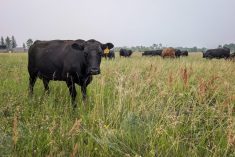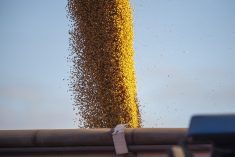CNS Canada — Despite a drop in spot prices due to tariffs imposed by India on peas, one industry expert says she isn’t convinced that means acreage will drastically be reduced in Alberta this spring.
“I think we’ll see a little bit of a drop, but I don’t think it will be as impactful as everybody says,” said Leanne Fischbuch, executive director with the Alberta Pulse Growers Commission.
Last year, farmers in the province seeded roughly 1.8 million acres of peas, similar to the year before.
Read Also

Field-by-field mapping could improve yield, productivity predictions
University of Saskatchewan researchers are using field border mapping to collect data on field variability, including problematic weeds, and to predict things like yields.
Many growers like the benefits pulse crops provide to their crops in a rotation, which is why many will likely stand pat, Fischbuch said.
“There’s a benefit to the soil and there’s benefits to breaking the disease cycle,” she said. “So it’s probably something they’re not going to walk away from quickly.”
Alberta grows many different types of pulses but yellow peas are its biggest pulse crop by far.
When India introduced its 50 per cent tariff on pea imports in early November, the impact on Prairie prices was immediate.
According to data from Prairie Ag Hotwire, prices for yellow peas declined by $1.44 per bushel within the first two weeks.
In early March last year, top bids for yellow peas on the Prairies were hitting as high as $9.75 a bushel. Now, those same peas are topping out around $6.80-$6.90.
“When huge tariff barriers come into play it affects us right down to the farm level,” said Fischbuch.
Traditionally China has been the second-largest customer for Alberta yellow peas and so far it has picked up some of the slack, she noted.
However, Fischbuch said, moving forward, it will be important to tap new markets so one country’s tariffs don’t drag down the entire market.
“What this has really taught us is that being dependent on a single marketplace is probably not always the best thing to happen to a commodity or a crop.”
Some farmers are also likely hanging onto some peas until the trade winds blow more favourably, she added. “There is still crop in the bin that hasn’t been moved.”
Between now and springtime, she said, some more precipitation would help prepare the land for the new crop.
“Some areas of the province are still dealing with 2016,” she said, referring to drought-like conditions many farmers faced.
“There are still parts of the province that are quite challenged.”
— Dave Sims writes for Commodity News Service Canada, a Glacier FarmMedia company specializing in grain and commodity market reporting.




















